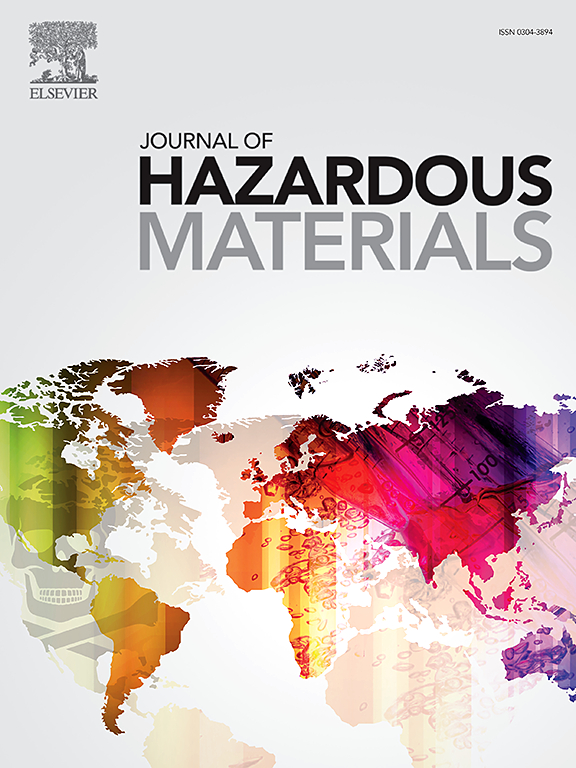Accumulation characteristics and source analysis of microplastics derived traffic of soil in the Tibetan Plateau
IF 12.2
1区 环境科学与生态学
Q1 ENGINEERING, ENVIRONMENTAL
引用次数: 0
Abstract
The development of transportation infrastructure can stimulate economic growth. However, the environmental and human health risks associated with the release of traffic-derived microplastics (MPs) into the ecosystem must also be considered. This study examined four types of soil samples collected from the Qinghai-Tibetan Plateau along the Gemang Highway. The abundance, size, morphology, and types of MPs were analyzed using laser direct infrared (LDIR) spectroscopy to gain a better understanding of their distribution and characteristics. The average abundance of MPs in the study area was 2,247.92 ± 2,053.82 n/kg. It showed the characteristics of wasteland (4,726.67 ± 2956.76 n/kg) > wolfberry plantation (3,294.44 ± 2,881.93 n/kg) > sandy land (1,519.44 ± 282.65 n/kg) > soil along the highway (1,144.44 ± 611.01 n/kg). 67.25% of MPs had a particle size of less than 100 μm, posing greater environmental risks. The 6 factors identified by the PMF model suggested a variety of potential sources of MPs and highlighted their connections to the transportation sector. The ecological risk assessment of MPs demonstrated a significant degree of risk, with particular concern regarding more toxic plastics use. This study provides fundamental data for the source analysis and ecosystem risk assessment of MPs derived traffic.

青藏高原土壤中微塑料的累积特征和来源分析
交通基础设施的发展可以刺激经济增长。然而,交通产生的微塑料(MPs)释放到生态系统中带来的环境和人类健康风险也必须考虑在内。本研究考察了从青藏高原格芒公路沿线采集的四种土壤样本。利用激光直射红外(LDIR)光谱分析了 MPs 的丰度、大小、形态和类型,以便更好地了解它们的分布和特征。研究区域中 MPs 的平均丰度为 2,247.92 ± 2,053.82 n/kg。它呈现出荒地(4,726.67 ± 2956.76 n/kg)>;枸杞种植园(3,294.44 ± 2,881.93 n/kg)>;沙地(1,519.44 ± 282.65 n/kg)>;公路沿线土壤(1,144.44 ± 611.01 n/kg)的特征。67.25%的 MPs 的粒径小于 100 μm,对环境造成了更大的风险。PMF 模型确定的 6 个因素表明了 MPs 的各种潜在来源,并强调了它们与运输部门的联系。多溴联苯醚的生态风险评估结果表明,多溴联苯醚具有很大程度的风险,尤其是有毒塑料的使用。这项研究为交通产生的多溴联苯醚的来源分析和生态系统风险评估提供了基础数据。
本文章由计算机程序翻译,如有差异,请以英文原文为准。
求助全文
约1分钟内获得全文
求助全文
来源期刊

Journal of Hazardous Materials
工程技术-工程:环境
CiteScore
25.40
自引率
5.90%
发文量
3059
审稿时长
58 days
期刊介绍:
The Journal of Hazardous Materials serves as a global platform for promoting cutting-edge research in the field of Environmental Science and Engineering. Our publication features a wide range of articles, including full-length research papers, review articles, and perspectives, with the aim of enhancing our understanding of the dangers and risks associated with various materials concerning public health and the environment. It is important to note that the term "environmental contaminants" refers specifically to substances that pose hazardous effects through contamination, while excluding those that do not have such impacts on the environment or human health. Moreover, we emphasize the distinction between wastes and hazardous materials in order to provide further clarity on the scope of the journal. We have a keen interest in exploring specific compounds and microbial agents that have adverse effects on the environment.
 求助内容:
求助内容: 应助结果提醒方式:
应助结果提醒方式:


